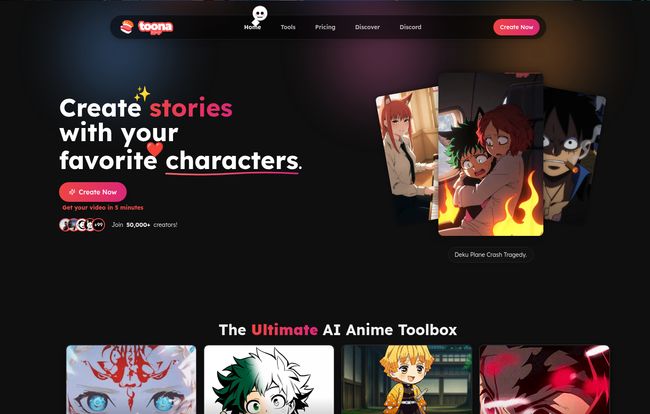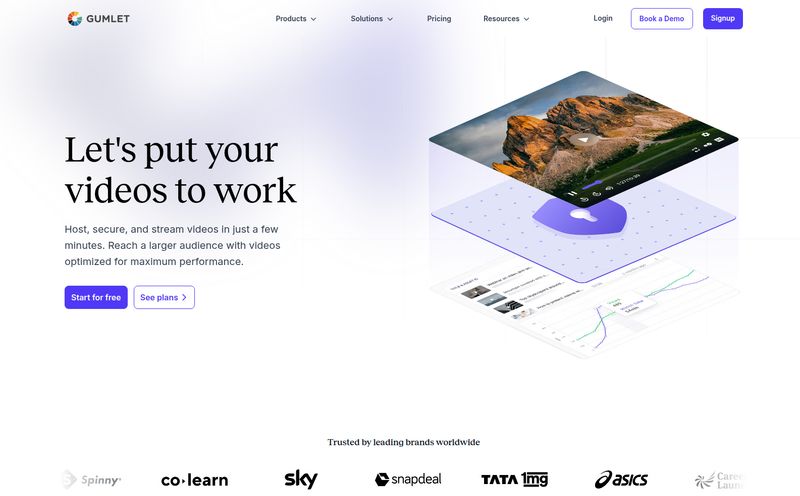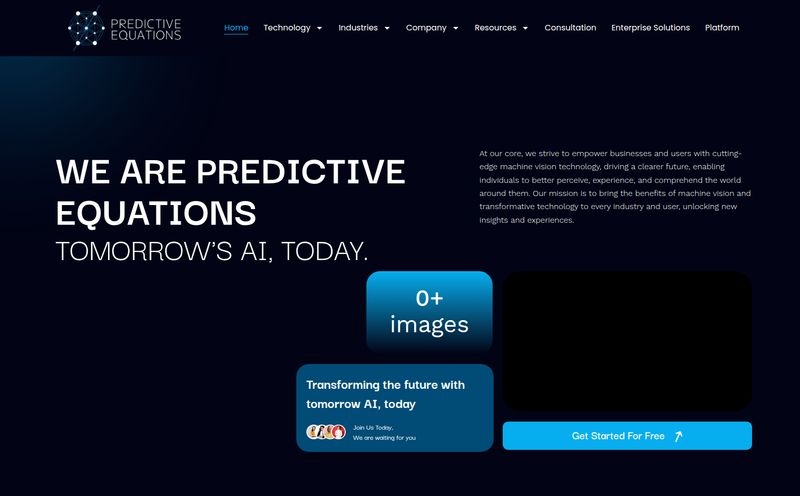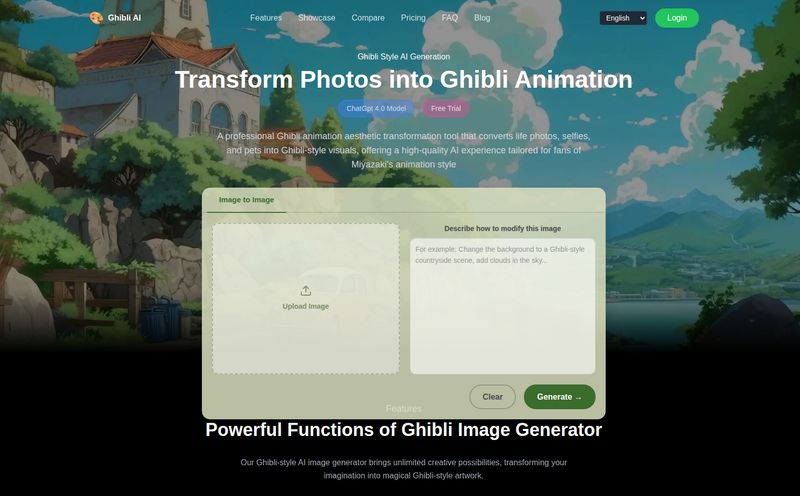If you're anything like me, you've probably spent countless hours scrolling through manga sites or watching anime, and you've had that one thought: "Man, I wish I could see that panel move." You know the one. That epic splash page of a character powering up, or a beautifully drawn, quiet moment that just begs for a little life, a little motion.
For years, making that happen meant diving into After Effects, learning complex keyframing, and basically becoming a part-time animator. It's a huge time sink. But the ground is shifting under our feet. AI tools are popping up everywhere, and the creative space is getting wild. I've been keeping a close eye on this, and a platform called Toona recently caught my attention. It claims to be the "Ultimate AI Anime Toolbox," and with a community of over 80,000 creators, I figured it was time to pop the hood and see what's really going on.
Is it just another flash-in-the-pan AI gimmick, or is it a genuinely useful tool for fans, creators, and marketers? Let's find out.

Visit toona
What Exactly is Toona? The 30,000-Foot View
At its core, Toona isn't just one thing. It's a whole collection of AI-powered tools designed specifically for the anime and manga aesthetic. Think of it less like a single paintbrush and more like a full artist's studio in your browser. The goal is to help you create animated manga, motion comics, and other cool video content without the traditional, soul-crushing workload.
It’s built for taking static images—your favorite manga panel, your own original character art—and giving them motion, color, and a higher resolution. It’s a bridge between the still world of manga and the moving world of anime. And honestly, the idea of being able to animate a scene from a manga that will probably never get an official anime adaptation? That’s pretty exciting stuff.
A Look Inside the Toona AI Anime Toolbox
Alright, this is the fun part. What can this thing actually do? Toona is split into several distinct tools, each tackling a different part of the animation process. Let's break them down.
Bringing Still Images to Life with Image to Video
This is probably the headline feature. You upload a single image, and Toona's AI analyzes it to generate a short video. It creates subtle movements—hair flowing, eyes blinking, camera pans—that can make a static image feel dynamic. It’s not going to create a full-blown fight scene from a single panel, but for creating mesmerizing, living portraits or cinematic shots, it's incredibly effective.
The Magic of the AI Manga Colorizer
I've spent hours trying to manually color manga panels in Photoshop. It's... a process. Toona's AI Manga Colorizer aims to do it in seconds. You feed it a black-and-white manga page, and the AI applies a full-color palette. From what I've seen, the results can be surprisingly good. It understands the typical anime color schemes and can produce some really vibrant, clean results. It's a massive timesaver, even if you just use it as a base layer and touch it up later.
Upscaling Your Art without the Pixelated Mess
Ever found a cool, old anime screenshot but it's the size of a postage stamp? Toona has tools for both Anime Image Upscale and Anime Video Upscale. It uses AI to increase the resolution of your images or videos while trying to maintain sharp lines and detail, avoiding that blurry, pixelated look you get from a standard resize. This is perfect for cleaning up old assets or preparing images for high-def displays.
Smoothing Things Out with Anime Interpolation
This one's a bit more technical but super cool. Interpolation, or inbetweening, is the process of generating frames between existing frames to make motion smoother. Think of old, choppy anime GIFs. Anime Interpolation can take that footage and add new frames, making it look like it's running at a silky 60fps. It's like a digital restoration artist that works in seconds. The platform also offers specific tools for Inbetween Frame Generation and an Anime Motion Painter for even more granular control.
The Big Question: How Much Does Toona Cost?
Let's talk money. Or, in this case, "Coins." Toona runs on a freemium, credit-based subscription model. I was actually pleasantly surprised by the transparency here. It’s all laid out pretty clearly on their site.
| Plan | Price | Key Features |
|---|---|---|
| Free | $0 / month | 200 Coins, 8 Story Scenes, 8 Colorings, some upscales and interpolations. A great way to test the waters. |
| Basic | $10.99 / month | 2000 Coins, 80 Story Scenes, 10 Image to Video credits, unlimited previews, and way more of everything else. |
| Pro | $26.99 / month | Even more coins and higher limits on all the tools. Aimed at power users and professionals. |
The "Coin" system is how they manage usage. Each action, like coloring a page or generating a video, costs a certain number of coins. The free plan gives you a small monthly allowance to play with, which I think is a fantastic approach. It lets you genuinely try before you buy. The Basic plan seems like the sweet spot for most hobbyists and regular content creators.
My Honest Take: The Good and The Not-So-Good
No tool is perfect, right? After playing around and looking at what the community is making, here's my take.
The best thing about Toona is its accessibility. It takes incredibly complex animation concepts and boils them down to a few clicks. The 'wow' factor of seeing your first colored manga panel or animated character is real. The free tier is also genuinely useful, not just a crippled demo. It’s a fantastic sand-box for creative ideas.
On the flip side, we have to acknowledge the nature of AI. The results can be a little… unpredictable. Some might argue that the quality can vary. You might get a perfect animation on your first try, or you might get a result where an eye is blinking a bit weirdly. It's not a complete substitute for artistic skill, but rather a powerful assistant. You still need a good eye to pick the right source images and to know when a result is working or when it needs another go. It's a collaborator, not an instant-art machine. But that's part of the fun, isnt it?
Who is Toona Really For?
I see a few groups getting a ton of value out of this:
- Anime & Manga Fans: Want to create slick edits of your favorite characters for TikTok or Instagram? This is your new best friend. Imagine animating key moments from the One Piece manga that the anime hasn't even reached yet.
- Indie Comic Creators: If you're a solo artist, this could be a game-changer for promoting your work. Creating motion comics or animated trailers for your webtoon just became a whole lot easier.
- Social Media Managers: For brands in the gaming, entertainment, or pop culture space, Toona is a fast way to generate eye-catching video content that feels native to the anime community.
Frequently Asked Questions
How does the 'Coin' credit system in Toona work?
Think of Coins as your currency on the platform. Every time you use a tool—like coloring an image or creating a video—it costs a certain number of Coins. Your plan (Free, Basic, or Pro) gives you a monthly allotment of these Coins. They refresh every month when your subscription renews.
Can I use animations made with Toona for commercial projects?
Generally, paid subscription plans for creative tools like this allow for commercial use, but the free versions are often limited to personal projects. I'd strongly recommend checking Toona's latest terms of service to be 100% sure, as these policies can change.
Do I need any animation experience to use Toona?
Absolutely not! And that’s the whole point. Toona is designed for beginners. If you can upload an image and click a button, you can start creating. Of course, having a good creative eye for what makes a good image will help you get better results.
What happens if I cancel my Toona subscription?
Typically with subscription models like this, you can continue to use the service until the end of your current billing period. After that, your account would likely revert to the Free plan, with its lower Coin allowance and feature limits. You wouldn't lose the content you've already created and downloaded.
How does Toona compare to other AI video tools like Runway or Pika?
That's a great question. While tools like Runway and Pika are powerful general-purpose AI video generators, Toona's strength is its specialization. It's been fine-tuned specifically for the anime and manga aesthetic. This means its models are better at understanding things like cel shading, line art, and common anime art styles, which can lead to more authentic results for that specific niche.
Final Thoughts
So, is Toona the ultimate AI anime toolbox? For a huge number of people, I think the answer is yes. It's fun, it's powerful, and it opens up creative avenues that were previously locked behind a massive skill and time barrier.
It won't replace the incredible work of professional animators, but it was never meant to. It’s a new type of creative instrument. It democratizes motion and lets anyone with a good idea bring a little piece of it to life. And in a world where we're all creators, that’s a pretty powerful thing. If you've ever wanted to make your favorite manga panel breathe, I’d say giving Toona’s free plan a spin is a no-brainer.
Reference and Sources
For more information and to try the tool for yourself, you can visit the official website:
- Toona Official Website - The information about features and pricing used in this article was sourced directly from their public-facing pages.



